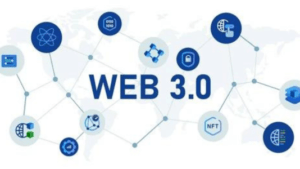Table of Contents:
Introduction
Understanding Web 3
Challenges of Web 3 for Businesses
- 1.1. Scalability
- 1.2. User Experience
- 1.3. Regulatory and Legal Concerns
- 1.4. Lack of Standardization
- 1.5. Energy Consumption
Disadvantages of Web 3 for Businesses
- 2.1. Complexity
- 2.2. Security Risks
- 2.3. Limited Adoption
- 2.4. Volatility and Speculation
- 2.5. Skill Gaps and Talent Acquisition
Opportunities of Web 3 for Businesses
- 3.1. Decentralization and Trust
- 3.2. Improved Security and Privacy
- 3.3. Tokenization and Digital Assets
- 3.4. Smart Contracts and Automation
- 3.5. Access to Global Markets
Examples of Web 3 Adoption in Business
- 4.1. Supply Chain Management
- 4.2. Finance and Banking
- 4.3. Intellectual Property Rights
- 4.4. Decentralized Applications (DApps)
- 4.5. Token Offerings and Crowdfunding
Strategies for Leveraging Web 3 in Business
- 5.1. Education and Skill Development
- 5.2. Pilot Projects and Proof of Concepts
- 5.3. Partnerships and Collaborations
- 5.4. Regulatory Compliance and Risk Management
- 5.5. User-Centric Design and Experience
- Conclusion
Introduction:
The emergence of Web 3 technologies, also known as the decentralized web or the blockchain-based web, has introduced a new paradigm for conducting business. Web 3 offers numerous opportunities for businesses to enhance transparency, security, and efficiency. However, like any new technology, Web 3 also presents its fair share of challenges and disadvantages that businesses must carefully consider. This paper explores the challenges, disadvantages, and opportunities associated with leveraging Web 3 for businesses, providing examples and insights to aid decision-making.
Understanding Web 3:
Web 3 represents the evolution of the internet from a centralized, controlled system to a decentralized, user-centric ecosystem. It leverages blockchain technology to ensure transparency, immutability, and security of data and transactions. Web 3 introduces concepts like decentralized applications (DApps), smart contracts, digital tokens, and distributed ledger technology (DLT) to empower individuals and organizations. Understanding the foundational elements of Web 3 is crucial for businesses to navigate its challenges and leverage its opportunities effectively.
Challenges of Web 3 for Businesses:
Implementing Web 3 technologies in a business environment presents several challenges that need to be addressed for successful integration.
- 1.1. Scalability:
One of the primary challenges of Web 3 is scalability. Web 3 networks, particularly public blockchains, face scalability challenges due to their consensus mechanisms. The limited transaction processing capacity and high latency can hinder the seamless functioning of businesses. For example, in the case of a popular DApp, such as a decentralized exchange, the network congestion can lead to slow transaction confirmations and high fees. However, several scaling solutions, such as layer 2 protocols and sharding, are being developed to address these challenges.
- 1.2. User Experience:
Web 3 applications often suffer from a suboptimal user experience compared to traditional centralized applications. The complexity associated with interacting with blockchain networks, managing private keys, and navigating decentralized interfaces can be daunting for non-technical users. Improving the user experience and making Web 3 applications more intuitive and user-friendly is essential for wider adoption. Businesses must invest in designing seamless and user-centric experiences to overcome this challenge.
- 1.3. Regulatory and Legal Concerns:
Web 3 technologies operate in a regulatory gray area in many jurisdictions. The decentralized and borderless nature of blockchain networks can create challenges for businesses in terms of compliance with existing regulations. Additionally, the legal frameworks surrounding digital assets, smart contracts, and data privacy are still evolving. Businesses must navigate these regulatory and legal complexities to ensure compliance and mitigate potential risks.
- 1.4. Lack of Standardization:
Web 3 is a rapidly evolving landscape with a multitude of protocols, standards, and platforms. The lack of standardization poses challenges for businesses looking to adopt Web 3 technologies. Interoperability between different blockchain networks and compatibility across various DApps can be complex and time-consuming. Developing industry-wide standards and protocols can help address this challenge and promote seamless integration of Web 3 technologies.
- 1.5. Energy Consumption:
Another challenge associated with Web 3 is the significant energy consumption required for consensus mechanisms like proof-of-work (PoW). Public blockchains, such as Bitcoin and Ethereum, consume substantial amounts of electricity, raising concerns about environmental sustainability. However, efforts are underway to develop more energy-efficient consensus mechanisms, such as proof-of-stake (PoS), to reduce the environmental impact of Web 3 technologies.
Disadvantages of Web 3 for Businesses:
While Web 3 offers numerous advantages, it also presents certain disadvantages that businesses need to consider before adoption.
- 2.1. Complexity:
Web 3 technologies are often complex, requiring businesses to invest in specialized technical expertise. Developing and maintaining blockchain infrastructure, implementing smart contracts, and ensuring secure key management can be challenging. The complexity associated with Web 3 technologies can increase development and operational costs for businesses.
- 2.2. Security Risks:
Web 3 introduces new security risks that businesses must address. While blockchain technology itself provides inherent security through immutability and cryptographic mechanisms, the applications built on top of it may still be vulnerable to hacking or smart contract bugs. Businesses must implement robust security measures, conduct thorough audits, and stay updated with the latest security practices to mitigate these risks.
- 2.3. Limited Adoption:
Although Web 3 technologies have gained significant attention, their adoption is still relatively limited compared to traditional centralized systems. This limited adoption can create challenges for businesses looking to interact with customers, partners, or suppliers who have not yet embraced Web 3. It is essential for businesses to carefully evaluate the readiness of their target audience and industry for Web 3 adoption.
- 2.4. Volatility and Speculation:
Cryptocurrencies and digital assets, which are integral to many Web 3 applications, are known for their price volatility and speculative nature. This volatility can create financial risks for businesses that rely on cryptocurrencies for transactions or hold digital assets as part of their business models. Effective risk management strategies, hedging techniques, and a thorough understanding of the market dynamics are crucial for mitigating these risks.
- 2.5. Skill Gaps and Talent Acquisition:
Web 3 technologies require specialized skills, including blockchain development, smart contract programming, and cryptography. Acquiring and retaining talent with expertise in these areas can be challenging, as the demand for such skills often exceeds the supply. Businesses must invest in talent development programs, collaborations with educational institutions, and partnerships with specialized firms to bridge the skill gaps and build a competent Web 3 team.
Opportunities of Web 3 for Businesses:
Despite the challenges and disadvantages, Web 3 presents significant opportunities for businesses willing to embrace this emerging technology.
- 3.1. Decentralization and Trust:
Web 3 technologies enable businesses to operate in a decentralized and trustless manner. Smart contracts and blockchain-based systems eliminate the need for intermediaries, reducing costs, and enhancing efficiency. By leveraging the transparency and immutability of blockchain, businesses can build trust with their stakeholders, foster collaborative ecosystems, and ensure fair and secure transactions.
- 3.2. Improved Security and Privacy:
Web 3 technologies offer enhanced security and privacy features compared to traditional centralized systems. The cryptographic mechanisms and decentralized nature of blockchain networks make them resilient to hacking and data breaches. Web 3 enables users to have greater control over their personal data, providing businesses with an opportunity to prioritize privacy and build customer trust.
- 3.3. Tokenization and Digital Assets:
Web 3 facilitates the tokenization of assets, allowing businesses to represent real-world assets as digital tokens on the blockchain. This tokenization opens up new possibilities for fractional ownership, liquidity, and seamless transfer of assets. Businesses can tokenize assets such as real estate, intellectual property rights, or even loyalty points, unlocking new revenue streams and enabling global participation.
- 3.4. Smart Contracts and Automation:
Smart contracts, programmable contracts executed on the blockchain, enable automated and self-executing agreements. Web 3 technologies empower businesses to streamline processes, eliminate manual intervention, and reduce administrative overheads. Smart contracts can automate tasks such as supply chain management, payments, and compliance, improving efficiency and reducing the risk of human error.
- 3.5. Access to Global Markets:
Web 3 technologies remove barriers to entry, allowing businesses to access global markets more easily. Blockchain-based platforms enable peer-to-peer interactions, eliminating the need for intermediaries and reducing transaction costs. Businesses can tap into a global customer base, engage with international partners, and explore new market opportunities through Web 3.
Examples of Web 3 Adoption in Business:
To illustrate the practical application of Web 3 technologies in business, let’s explore some examples:
- 4.1. Supply Chain Management:
Blockchain-based supply chain solutions enable end-to-end traceability, transparency, and authenticity of products. For instance, Walmart utilizes blockchain to track the provenance of food products, ensuring food safety and reducing the time taken for recalls.
- 4.2. Finance and Banking:
Web 3 has disrupted the traditional finance industry with decentralized finance (DeFi) applications. DeFi platforms enable lending, borrowing, and trading of digital assets without intermediaries. For example, Aave is a decentralized lending protocol that allows users to borrow and lend digital assets directly from their wallets.
- 4.3. Intellectual Property Rights:
Blockchain can revolutionize the management of intellectual property (IP) rights by creating an immutable record of ownership. Companies like IPwe are leveraging blockchain to create a global marketplace for trading and monetizing IP assets, facilitating fair and transparent transactions.
- 4.4. Decentralized Applications (DApps):
DApps built on Web 3 platforms provide alternative solutions to centralized applications. For example, Brave Browser integrates blockchain technology to offer a privacy-centric browser experience while rewarding users with its native cryptocurrency, BAT (Basic Attention Token), for their attention.
- 4.5. Token Offerings and Crowdfunding:
Web 3 enables businesses to raise funds through Initial Coin Offerings (ICOs) or Security Token Offerings (STOs). These mechanisms provide access to global investors and liquidity for digital assets. For instance, Filecoin raised over $200 million through an ICO to develop a decentralized file storage network.
Strategies for Leveraging Web 3 in Business:
To harness the opportunities presented by Web 3, businesses can adopt the following strategies:
- 5.1. Education and Skill Development:
Invest in educating the workforce about Web 3 technologies, blockchain fundamentals, and their potential applications. Foster a culture of continuous learning and provide resources for employees to upskill in this domain.
- 5.2. Pilot Projects and Proof of Concepts:
Start with small-scale pilot projects to explore the feasibility and benefits of Web 3 adoption in specific areas of the business. Test different use cases, gather feedback, and iterate before scaling up.
- 5.3. Partnerships and Collaborations:
Collaborate with Web 3 startups, blockchain consortia, and industry networks to leverage their expertise and resources. Partnerships can accelerate innovation, provide access to specialized skills, and open doors to new markets.
- 5.4. Regulatory Compliance and Risk Management:
Stay updated with the evolving regulatory landscape surrounding Web 3 technologies. Establish robust compliance frameworks, risk management protocols, and security measures to mitigate potential risks and ensure legal compliance.
- 5.5. User-Centric Design and Experience:
Prioritize user experience when designing Web 3 applications. Simplify processes, abstract technical complexities, and create intuitive interfaces that cater to both tech-savvy users and non-technical individuals.
Conclusion:
Web 3 technologies offer immense potential for businesses to transform their operations, enhance security, and unlock new revenue streams. However, careful consideration of the challenges and disadvantages associated with Web 3 is crucial for successful adoption. By understanding these factors and leveraging the opportunities presented by Web 3, businesses can position themselves for growth and innovation in the decentralized economy.



